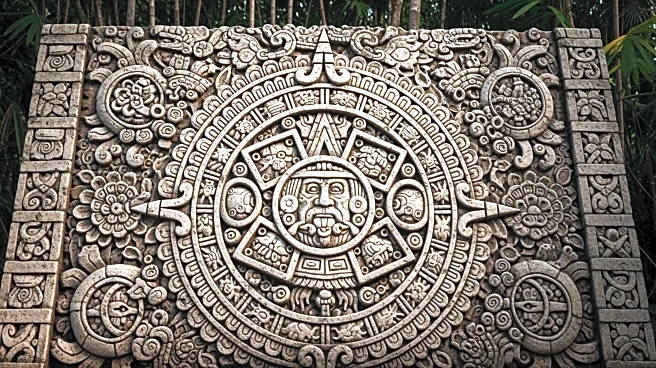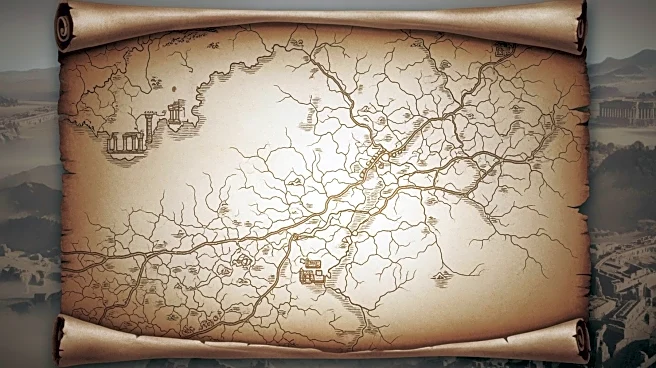What's Happening?
A monumental complex built by the Maya civilization approximately 3,000 years ago has been discovered in Mexico, near the Guatemalan border. Known as Aguada Fénix, this site is now considered the largest
and oldest known Maya structure. The site, which spans roughly 9 by 7.5 kilometers, features channels, bridges, and dams arranged in cross-like patterns symbolizing the universe. Researchers believe the construction was a community effort, inspired by its cultural significance, similar to the communal building of Stonehenge. The site includes an 'E Group' of smaller structures where ritual objects were found, including jade ornaments and ancient pottery. The study, published in Science Advances, suggests that the site was used for major construction projects and collective rituals, possibly involving feasting and social interactions.
Why It's Important?
The discovery of Aguada Fénix provides significant insights into the early Maya civilization, particularly their cosmological beliefs and social organization. Unlike later Maya cities, Aguada Fénix shows no evidence of social hierarchy, indicating a more egalitarian society. This challenges previous assumptions about the development of social structures in ancient Mesoamerican cultures. The site's design, aligned with cosmic maps, highlights the importance of astronomy and calendar calculations in Maya society. This finding could reshape understanding of how ancient civilizations perceived and interacted with the universe, offering a new perspective on the cultural and scientific advancements of the Maya.
What's Next?
Further research and excavation at Aguada Fénix are likely to continue, as archaeologists aim to uncover more about the site's purpose and the people who built it. The lack of written records poses a challenge, but ongoing studies using advanced technologies like LiDAR may reveal additional details about the site's construction and use. The findings could influence future archaeological approaches and interpretations of other ancient sites in the region, potentially leading to new discoveries about the Maya and their influence on subsequent cultures.
Beyond the Headlines
The discovery of Aguada Fénix also raises questions about the role of community and voluntary participation in large-scale construction projects in ancient societies. The absence of forced labor suggests a different model of social organization, where cultural and religious motivations played a significant role. This could prompt a reevaluation of how ancient societies mobilized resources and labor, offering lessons for understanding the dynamics of community-driven projects in history.











